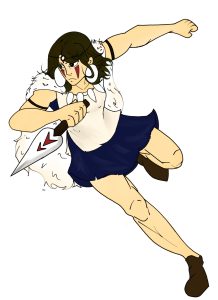Dissecting body shaming: It’s deeper than your feed
October 16, 2020
Ah, social media: the new American pastime. Although social media platforms such as Instagram, Facebook and Twitter have been criticized for their allowance of fake news, malicious political posturing and unjustifiable content which festers in the online social sphere, they remain a staple in daily life. Our collective social media overconsumption has fostered an environment that allows for comparison across lifestyles with everyone competing for an artificial, external validation rooted in the perception of popularity and happiness, body types being the most observed and criticized area of comparison. Social media, because of its convenience and accessibility, serves as a host for what has become a body shaming epidemic.
At surface level, it’s effortless to blame a specific influencer or trend for the alienation of larger bodies, and it’s easier to promote body positivity as a solution, but the roots of such a problem go deeper, and the branches of its impacts grow far taller. It is necessary to attempt to pinpoint the origin of body shaming as a construct while tracing its historical changes. It is not to say that one explanation is better than the other but perhaps to realize that there are multiple catalysts for an ever-growing dilemma.
A major one is American culture’s obsession with health that fuels the booming diet industry. Fear of obesity and its underlying conditions has kept Americans switching diets and workout plans. A common turning point is the statistic that obesity causes 300,000 deaths a year, but the Centers for Disease Control actually contests that the death count caused by obesity is much lower, around 112,000 a year. The Journal of the American Medical Association even published an analysis on health risks related to body mass index that reported the “most healthy” weight category, measured by morbidity and mortality, is overweight. The contradiction of widely held conceptions about health, like smaller is better, has left many cynical to the truth of a world in which bigger could also be better. This human hesitancy has meant that society continues to body shame. The retention of such paltry ideals has continued to fuel the dieting industry, which, as of 2014, made $60.5 million on the specious foundation that a particular group of bodies are preferable to others.
Finally, America’s body shaming epidemic could perhaps be attributed to our culture’s lack of understanding of shame and shame resilience. Author Brene Brown defines shame as “the intensely painful feeling of believing we are flawed and therefore unworthy of acceptance and belonging.” It is also important to note the dynamics of guilt are different from those of shame: When one is guilty, the individual recognizes the behavior was bad, but when one is shameful, the individual instead thinks “I am bad.” Thus, the human instinct for connection propels us to change inward and outward appearance for external acceptance and validation. Perhaps the reason body shame has become so prevalent is that there is a culture of disconnection; therefore, the remedy is compassion, understanding and confronting how body shaming has impacted our own lives.
The impact of body shaming is, of course, vast, with attempts at altering bodies starting at younger and younger ages. In fact, according to the National Institute on Media and Family, 40% of girls aged 9-10 claimed to be unhappy with their bodies. The number grew to 53% at age 13 and 78% by age 17. But even as young people continue to try to shrink their bodies, there are still impossible double standards that fail to satiate the competitive nature of social media. Body shame poses an unwinnable bias that pits friend against friend to achieve an arbitrary image of health.
There is no short solution for what has become a body image epidemic. Any piecemeal attempt would take a complex area of concern and turn it into something small and oversimplified. Still, to combat body shame, there must be mass rejection of the habits that attribute health, morality and value on body size. There must be nuance when discussing health, making it an inclusive space for all bodies. There must be acceptance of the multiple biological and sociological factors that influence body size and an open-door culture that harbors compassion and understanding.









